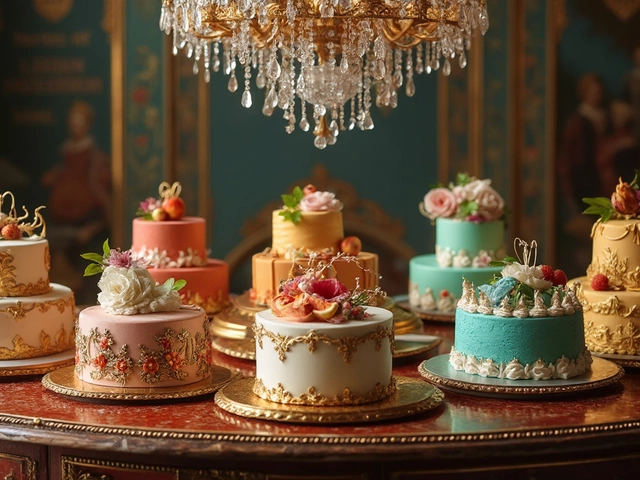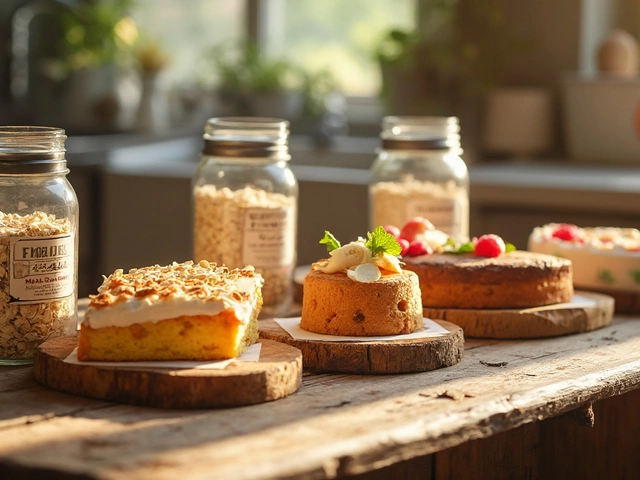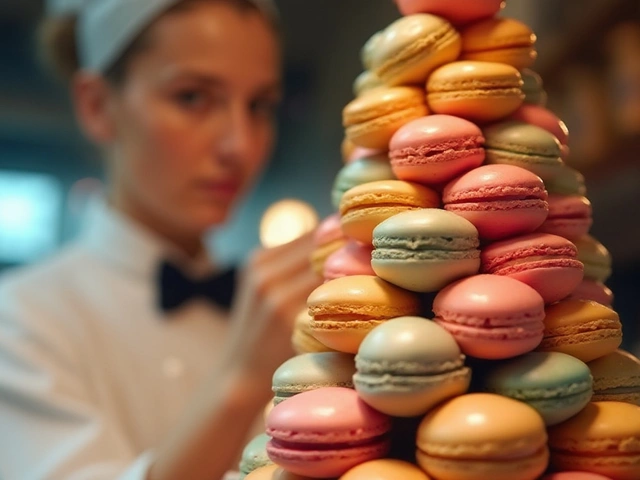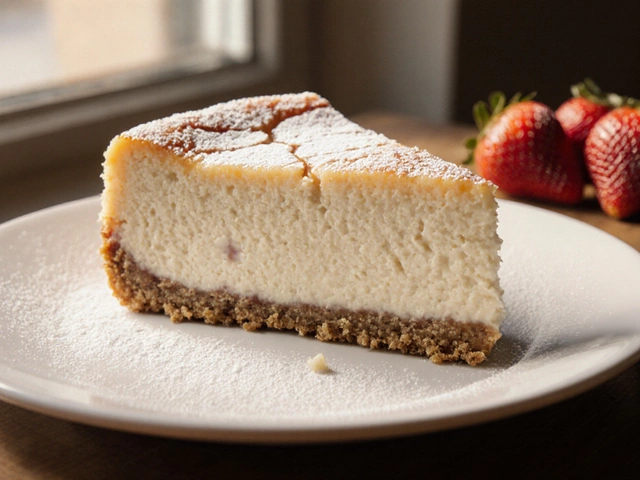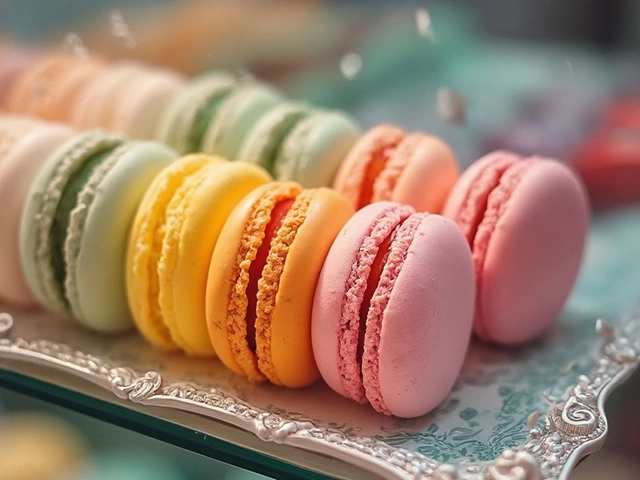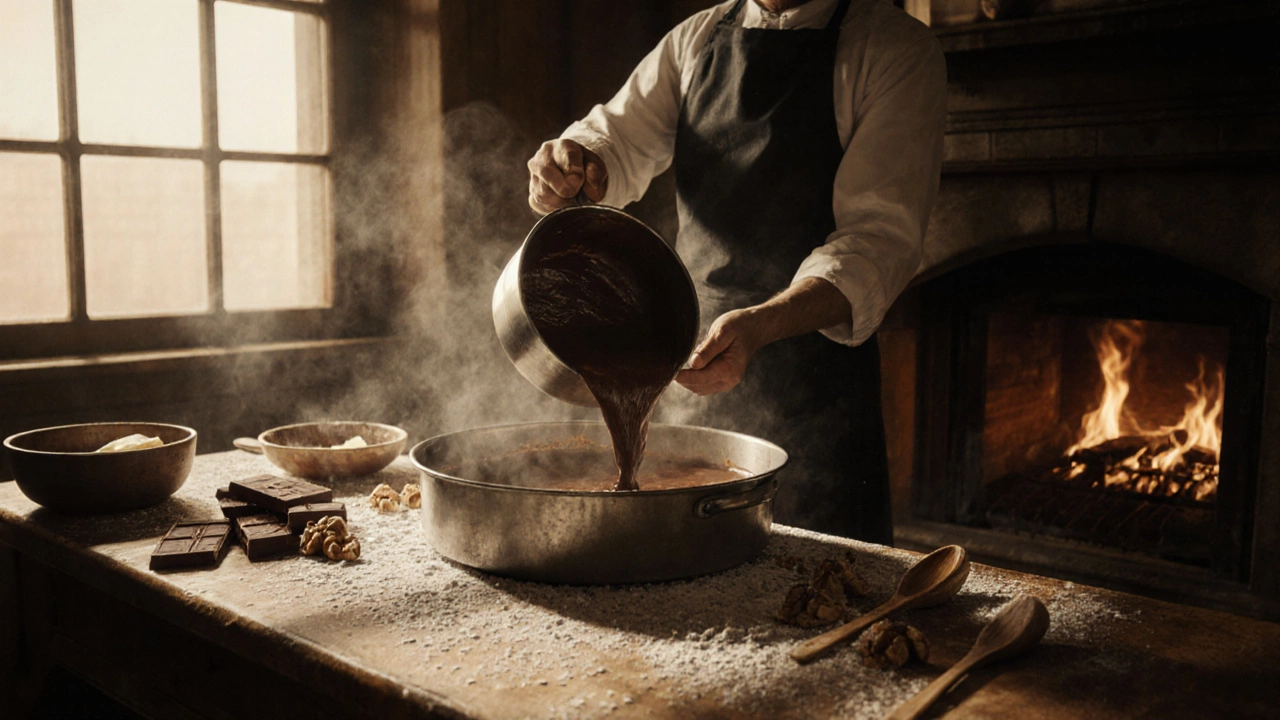
Brownie Type Calculator
Find Your Perfect Brownie Type
Choose your preferred brownie texture and learn how to make it authentically like the original 1900s recipe.
Key Characteristics
Best For
Authentic 1900s Recipe
Use 4 ounces unsweetened baking chocolate (not cocoa powder). Melt with 1 cup butter over low heat. Stir in 2 cups granulated sugar and 2 large eggs. Add 1 tsp vanilla and 3/4 cup flour. Fold gently. Bake at 350°F for 25-30 minutes until top cracks and center wobbles slightly.
How to Customize
Ever taken a bite of a warm, fudgy brownie and wondered where it came from? It’s not just a dessert-it’s a piece of American baking history with a messy, debated past. You’ve probably seen brownies in every bakery, school bake sale, and grocery store freezer aisle. But the truth is, no one really knows for sure who made the first one-or where. What we do know is this: the brownie, as we recognize it today, was born in the United States in the late 1800s, and it wasn’t even meant to be a brownie at first.
The Chicago Hotel That Started It All
The most widely accepted story traces the brownie back to 1893 at the Palmer House Hotel in Chicago. The hotel’s head baker, Bertha Palmer, was hosting the World’s Columbian Exposition. She wanted a dessert for women that was smaller than a cake, rich enough to satisfy, and easy to eat with one hand while walking around the fairgrounds. The original recipe called for a chocolate pastry made with walnuts and a prune glaze. It was baked in a large pan, cut into small squares, and served as a single-serving treat. That’s the closest we have to the first brownie.
But here’s the twist: that early version wasn’t what we’d call a brownie today. It was more like a dense, fruity chocolate bar. The gooey, fudgy, chocolatey brownie we love came later. The name itself didn’t even appear in print until 1898, in a Boston Cooking-School Cook Book by Fannie Farmer. She called it a “Brownie” and described it as a “chocolate cake” baked in a pan and cut into squares. No nuts. No fruit. Just chocolate, butter, sugar, and flour. That’s the version that stuck.
Why Not Belgium or Switzerland?
People often assume brownies came from Europe because of their rich chocolate flavor. After all, Belgium and Switzerland are famous for chocolate. But chocolate wasn’t the issue-it was the technique. European desserts like flourless chocolate cakes or tortes were already around, but they were delicate, airy, and served in small portions. The brownie was different. It was dense, chewy, and meant to be eaten casually. That’s an American innovation.
Early American bakers didn’t have access to high-quality cocoa powder like European chocolatiers. They used baking chocolate, which was bitter and required a lot of sugar to balance it. They also didn’t have electric mixers. So they stirred batter by hand, which led to less air being incorporated. That’s why brownies turned out dense instead of fluffy. The texture wasn’t an accident-it was a product of available ingredients and tools.
The Evolution: From Cake to Brownie
In the 1900s, brownies started appearing in home cookbooks across the U.S. By 1906, the recipe had changed again. The prune glaze disappeared. Nuts became optional. The name stuck. What made brownies spread so fast? They were cheap. They used simple ingredients: sugar, butter, eggs, flour, and a few ounces of chocolate. No fancy equipment needed. You didn’t even need to know how to frost a cake. Just pour, bake, cut, and serve.
By the 1920s, brownies were a staple in American households. They showed up in school lunches, church potlucks, and even military rations during World War I. The rise of packaged baking chocolate-like Baker’s Chocolate and later Hershey’s-made it even easier. You didn’t need to buy a whole bar and chop it up. You could buy squares that melted perfectly. That’s when brownies became a national favorite.
Regional Variations: Fudgy vs. Cakey
Even within the U.S., brownies aren’t one-size-fits-all. In the Northeast, people prefer a fudgy, almost molten center-baked just until the edges set. In the Midwest, they like them more cakey, with a light crumb and a slight rise. The difference comes down to one thing: how much flour and egg you use.
Traditional fudgy brownies use less flour and more butter and chocolate. Some bakers even skip the baking powder entirely. Cakey brownies add more flour, an extra egg, and sometimes baking powder to make them rise. You can tell them apart before you even taste them: fudgy ones crack on top, cakey ones are smoother. Neither is wrong. It’s just regional taste.
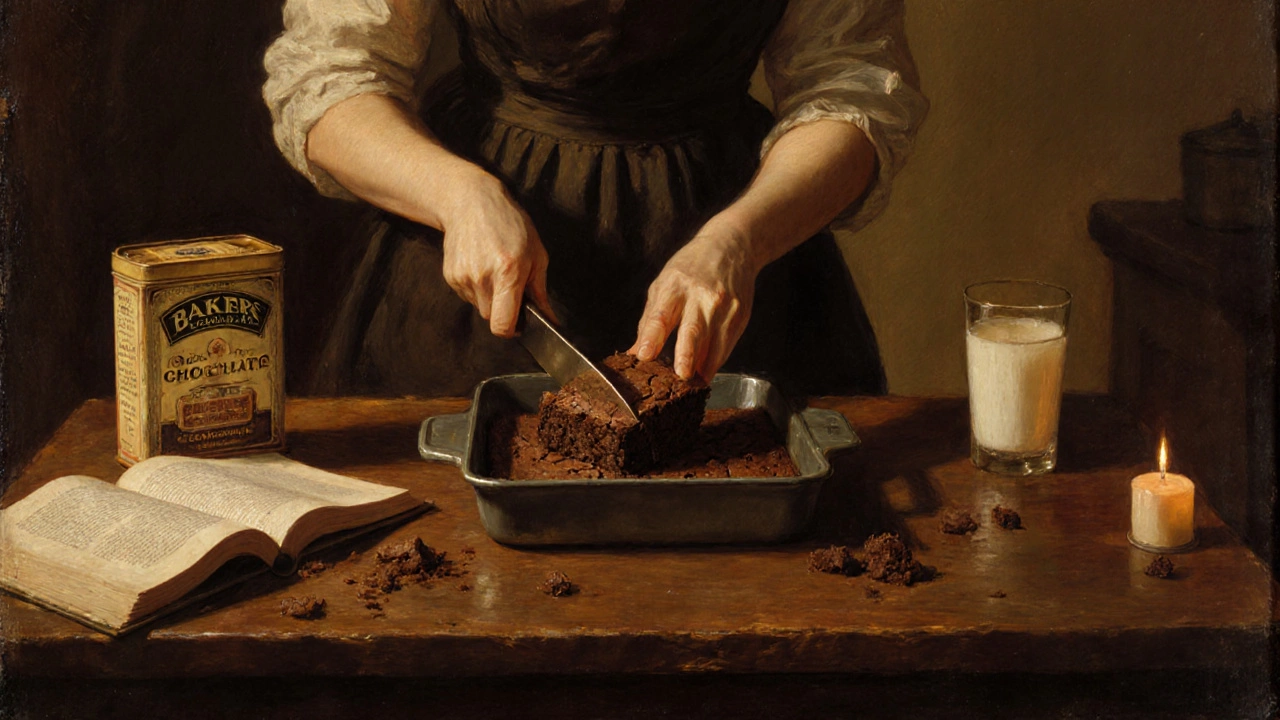
How Brownies Spread Around the World
By the 1950s, American soldiers and tourists carried the brownie abroad. It showed up in cafés in London, Paris, and Tokyo-not as a novelty, but as a symbol of American comfort food. Today, you’ll find brownies in bakeries from Sydney to São Paulo. But they’re still American in spirit. Even when they’re made with matcha or black sesame, the base is the same: chocolate, sugar, butter, flour. No other country claims to have invented it. No other country has made it their own quite like the U.S. has.
Why This Matters
Understanding where brownies came from isn’t just about trivia. It’s about how food evolves. The brownie wasn’t invented by a chef in a fancy kitchen. It was created by necessity-by a hotel baker who needed something simple, portable, and satisfying. It was shaped by what was available: cheap chocolate, basic ingredients, and home ovens. That’s what makes it so enduring.
It’s also why brownies still feel personal. Everyone has a version they grew up with. Your grandma’s with pecans. Your mom’s with a pinch of salt. Your friend’s with a layer of caramel on top. That’s the magic of the brownie. It’s not just a dessert. It’s a memory wrapped in chocolate.
What Makes a Brownie a Brownie?
Let’s cut through the noise. A true brownie has four core ingredients: chocolate, sugar, butter, and flour. Eggs bind it. Vanilla adds depth. Nuts are optional. Baking powder? Optional. The key is texture. If it’s too airy, it’s a chocolate cake. If it’s too runny, it’s a molten lava cake. A brownie sits right in the middle-dense, chewy, with a slight crust on top and a soft center.
There’s no official definition. But if you’re trying to recreate the original spirit, start with a 1900s recipe. Use unsweetened baking chocolate, not cocoa powder. Melt the butter and chocolate together. Don’t overmix. Bake until a toothpick comes out with a few moist crumbs. That’s the real thing.
| Type | Texture | Key Ingredients | Best For |
|---|---|---|---|
| Fudgy | Soft, dense, almost gooey | More butter and chocolate, less flour | Chocolate lovers, dessert purists |
| Cakey | Light, airy, crumbly | More flour, baking powder, extra egg | Those who like cake-like desserts |
| Chewy | Springy, slightly sticky | Dark brown sugar, corn syrup | Texture seekers, nostalgic bakers |
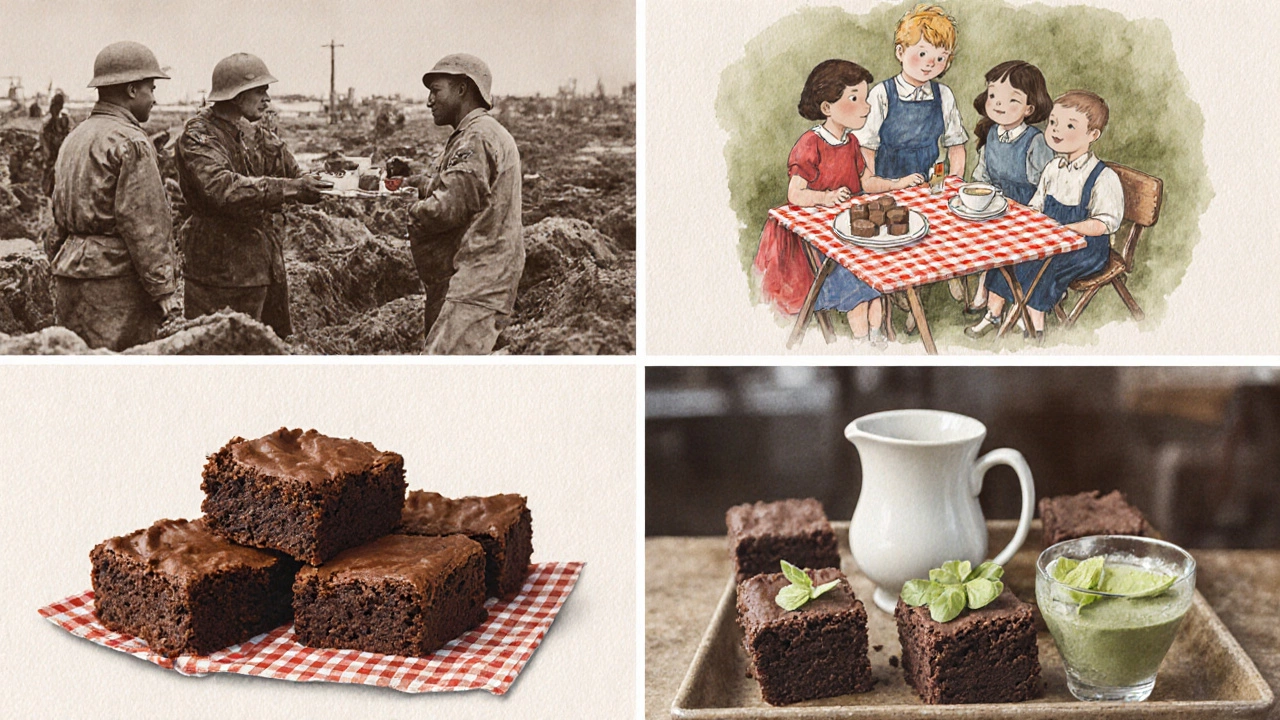
Myths About Brownies
There are a few myths that keep popping up. One is that brownies were invented by accident. Maybe. But the Palmer House story is well-documented. Another myth is that brownies were named after the little creatures in folklore. That’s not true-the name came from the color. Early recipes called them “brown chocolate cake,” and “brownie” was just shorthand.
Another myth? That brownies need nuts. They don’t. The original Palmer House recipe had walnuts, but Fannie Farmer’s 1898 version didn’t. Nuts are an add-on, not a requirement. Same with frosting. A classic brownie doesn’t need it. The chocolate flavor should stand on its own.
How to Bake the Most Authentic Brownie
If you want to taste history, here’s how to bake a brownie close to the original 1900s version:
- Use 4 ounces of unsweetened baking chocolate (not cocoa powder).
- Melt it with 1 cup of butter over low heat.
- Stir in 2 cups of granulated sugar and 2 large eggs. Mix just until combined.
- Add 1 teaspoon of vanilla and 3/4 cup of all-purpose flour. Fold in gently.
- Pour into a greased 8x8-inch pan.
- Bake at 350°F for 25-30 minutes, until the top cracks and the center still wobbles slightly.
- Cool completely before cutting. No need to frost.
That’s it. No nuts. No extras. Just chocolate, sugar, butter, and flour. The way it was meant to be.
Did brownies originate in Belgium?
No, brownies did not originate in Belgium. While Belgium is famous for chocolate, the brownie as we know it was created in the United States in the 1890s. Belgian desserts like chocolate tortes are richer and more delicate, while American brownies are dense, chewy, and meant to be eaten casually. The ingredients and technique are distinctly American.
Who really invented the brownie?
The most credible story credits Bertha Palmer, the wife of a Chicago hotel owner, who requested a small, portable chocolate dessert for the 1893 World’s Columbian Exposition. The hotel’s chef created a walnut-studded chocolate square, which evolved into the modern brownie. The name “brownie” appeared in print in 1898 in Fannie Farmer’s cookbook, solidifying the recipe we recognize today.
Are brownies a type of cake?
Technically, brownies are baked desserts that sit between cake and cookie. They’re made with cake-like ingredients but have a denser, chewier texture. Unlike cakes, they usually don’t use leavening agents like baking powder, and they’re cut into squares rather than sliced. So while they’re often called “chocolate cake,” they’re their own category.
Why do brownies have a crackly top?
The crackly top forms when sugar dissolves in the melted butter and chocolate, then crystallizes on the surface as the brownie bakes. This happens more with granulated sugar and when the batter is mixed just enough-not overmixed. The crackle is a sign of a well-made, traditional brownie, not a flaw.
Can you make brownies without eggs?
Yes, but the texture changes. Eggs give brownies structure and a slight rise. Without them, brownies become denser and fudgier. You can substitute with flaxseed meal mixed with water, applesauce, or commercial egg replacers. However, the classic crackly top and chewy center are harder to replicate without eggs.
Final Thought: The Brownie Is American
It doesn’t matter if you like them fudgy or cakey. Whether you eat them plain or with ice cream. The brownie is American-not because of where chocolate comes from, but because of how it was transformed. It turned a simple, bitter ingredient into something comforting, accessible, and deeply personal. That’s the real invention.

